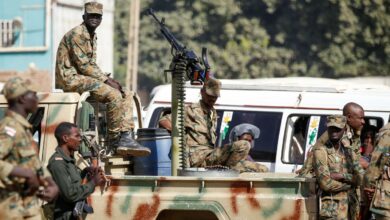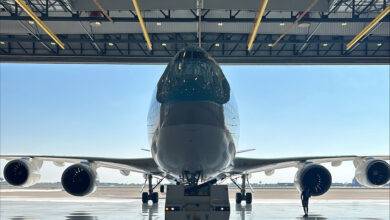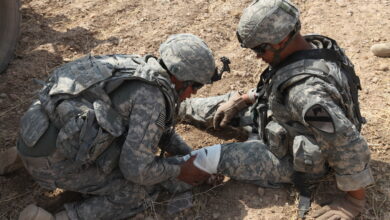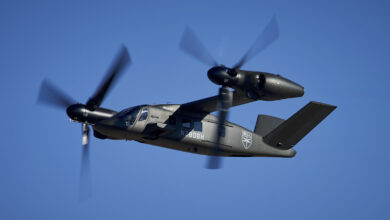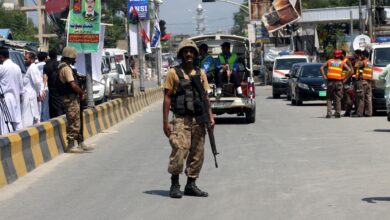First 6 Afghan Air Force Black Hawk helicopter pilots graduate training
The first six Afghan Air Force pilots qualified to pilot the UH-60 Black Hawk graduated from Aircraft Qualification Training on November 20, a U.S. Air Force news release said.
The newly qualified Black Hawk pilots all had experience flying the Russian Mi-17 helicopter, making the transition to the American aircraft relatively straightforward, the Monday, December 4 press release said.

“I am happily announcing that today a new page is opening in Afghanistan Air Force life,” said Maj. Gen. Abdul Raziq Sherzai, Kandahar Air Wing commander. “In the past years, due to civil wars, our Air force capabilities reached to almost zero. Today we can see, that we are not far from standing on our own feet.”

32 English-speaking Black Hawk crews expected by 2019
UH-60 flight training lasts around 16 weeks – six weeks for Aircraft Qualification Training and then 10 weeks for Mission Qualification Training.
According to the U.S. Air Force, the two main criteria for selection are flight physicals and English language ability.
In 2018, the U.S, Air Force will train 14 AAF pilots on the UH-60 at Fort Rucker, Alabama, a further 21 in 2019, and then 25 in the following years, with four qualified crews expected by fighting season 2018, and 32 crews by fighting season 2019.

Mission-ready Afghan pilots fly and lead combat missions in Afghanistan, the Air Force said, adding that Coalition members are not involved in Afghan combat missions.
U.S. Air Force Train, Advise, Assist Command-Air advisors will work with contract support to oversee continuation training in Afghanistan, the release said.

According to the U.S. Special Inspector General for Afghanistan’s July report, the AAF had a total of 46 Mi-17s, 19 of which were unusable because they were undergoing overhaul or repair.
“As TAAC-Air we look for three things: capable, sustainable and professional. The Mi-17 is no longer sustainable as it is becoming obsolete,” said Lt. Col. Trenton Alexander, 441st Air Expeditionary Advisory Squadron commander. “The UH-60 is sustainable, [allowing] us to meet our three tiers of capable, sustainable, and professional.”
However, Reuters reported in 2016 that military officials originally wanted to use the Mi-17 for the AAF because Afghan pilots and mechanics were already familiar with the aircraft, and the Pentagon planned to spend more than $1 billion on new Mi-17s. This position changed under pressure from the U.S. Congress in 2013, and in 2014 President Barack Obama issued formal restrictions on doing business with Russian arms manufacturers.

Afghan Air Force modernization
The Afghan Air Force will more than double their fleet of aircraft over the next seven years, according to the release, as it shifts from Russian-built to American-made aircraft.
Plans include the introduction of Cessna AC-208 Combat Caravan aircraft, along with additional UH-60 Black Hawk helicopters, A-29 Super Tucano light attack aircraft and MD-530 light attack helicopters.

The first two UH-60s sent from U.S. Army stock under the Blackhawk Exchange and Sale Transaction divestiture program were delivered to Afghanistan on September 18. In total, more than 150 Black Hawks will be delivered to the AAF under the program over the next five years.
By 2024 the U.S. will provide at least 159 one-careful-owner Black Hawks including 58 fitted with extra rocket pods and machine guns to provide close air support, Reuters reported in September. The refurbishment and upgrade costs the U.S. government around $8 million each.

Separately, the U.S. Air Force ordered six additional A-29s for the AAF in October, bringing to 26 the total number of Super Tucano aircraft to be supplied under the Afghanistan Program. Of the 12 in the AAF inventory, seven are used for pilot training in the U.S.
“The training of the Afghanistan Air Force and the introduction of the A-29 Super Tucano attacker plane is an outright success story,” the Deputy Commanding General – Air, Combined Joint Forces Land Component Command Brigadier General Andrew Croft told The Defense Post in a November interview.
“The Afghanistan Air Force, which actually has been built from ground up, and now it gives them the capability to do also precision strikes in a very difficult terrain,” Croft said. “ The key is to build that capacity over time.”

Contractor support in Afghanistan
In October, U.S. defense contractor Leidos said it had won a U.S. Army Afghanistan Contractor Logistics Support contract valued at up to $728 million to support AAF and Special Mission Wing helicopter and fixed-wing aircraft until May 2020.
Leidos said that it will “deliver all flight operations, maintenance, and logistics, and will provide mentoring for the AAF and SMW to operate and maintain aircraft.”






